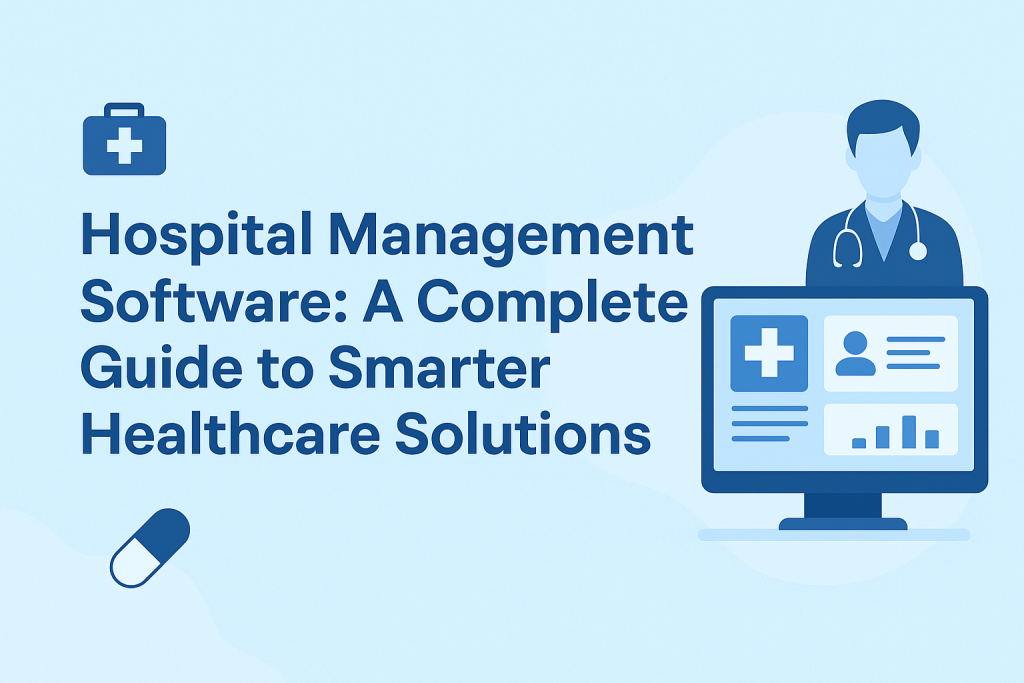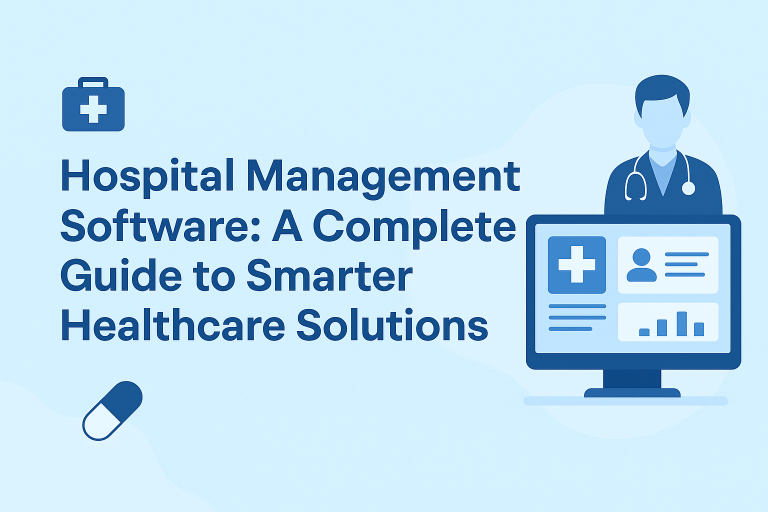The healthcare sector is experiencing a digital revolution, with EHR software in India playing a pivotal role in reshaping how hospitals, clinics, and practitioners manage patient care. The shift from paper-based medical charts to advanced Electronic Medical Record Service platforms has not only streamlined healthcare delivery but has also opened doors to better patient engagement, improved efficiency, and enhanced clinical outcomes.
In this blog, we’ll explore the significance of ehr software, its adoption across India, its benefits, challenges, and how it is revolutionizing healthcare delivery in both rural and urban areas.
What is EHR Software?
EHR software (Electronic Health Record software) is a digital platform that stores, organizes, and manages patient health information electronically. Unlike traditional paper-based records, which are prone to errors, loss, and delays, EHR software provides a structured and secure way to record and access patient data.
Key components of Electronic Medical Record Service typically include:
- Patient demographics and medical history
- Clinical documentation and diagnostic reports
- Medication and prescription details
- Immunization records
- Lab and radiology results
- Billing and insurance information
The primary goal of EHR software is to enable healthcare providers to offer more accurate, efficient, and patient-focused care.
The Rise of EHR Software in India
India’s healthcare system is diverse, spanning urban super-specialty hospitals to rural health centers with limited resources. Traditionally, most providers relied on manual paper records, which often led to inefficiencies, duplication of tests, and mismanagement of patient information.
With the growing need for efficiency and transparency, EHR software in India has gained significant momentum. The government’s Ayushman Bharat Digital Mission (ABDM) aims to create a unified digital health ecosystem where every citizen has a digital health ID linked to their medical records. This initiative has further accelerated the adoption of Electronic Medical Record Service across the country.
In addition, private hospitals, telemedicine platforms, and diagnostic centers are increasingly integrating EHR software into their workflows, making healthcare delivery more streamlined and accessible.
Benefits of Using EHR Software with Electronic Medical Record
The adoption of EHR software in India has introduced several advantages for healthcare providers and patients alike:
1. Efficiency in Operations
By automating data entry, appointment scheduling, and prescription management, providers save valuable time. This ensures doctors can focus more on patients rather than administrative tasks.
2. Improved Patient Care
With access to complete medical histories, doctors can make informed decisions, avoid duplication of tests, and create personalized treatment plans.
3. Data Accuracy and Security
Electronic Medical Record Service reduces the risks associated with manual records, such as illegible handwriting or misplaced files. Data security measures like encryption ensure sensitive patient information remains protected.
4. Enhanced Collaboration
Different specialists, labs, and hospitals can share and update patient data seamlessly through interconnected ehr software, ensuring continuity of care.
5. Patient Empowerment
Patients can access their records through mobile apps or portals, giving them greater control and awareness about their health journey.

Features of Modern EHR Software with Electronic Medical Record
Today’s EHR software comes with advanced features designed to meet the evolving needs of healthcare providers:
- Cloud Integration: Easy access to records anytime, anywhere.
- e-Prescriptions: Send prescriptions directly to pharmacies digitally.
- Analytics & Reporting: Generate insights for better decision-making.
- Telemedicine Support: Seamless integration with virtual consultations.
- Mobile Compatibility: Access patient records on the go through smartphones.
- Compliance: Adherence to healthcare standards like HIPAA or NDHM in India.
These features make EHR software in India not just a digital replacement for paper files, but a comprehensive tool for managing healthcare delivery.
Challenges in Adopting EHR Software with Electronic Medical Record in India
While the adoption of Electronic Medical Record Service is growing, there are still several challenges to overcome:
- High Initial Investment – Small clinics and rural healthcare centers may find it difficult to afford advanced ehr software.
- Lack of Training – Healthcare staff often need training to adapt to new digital workflows.
- Internet Connectivity – In rural areas, poor internet infrastructure can hinder the use of cloud-based solutions.
- Data Privacy Concerns – Protecting sensitive patient data remains a major priority, especially as cyber threats increase.
However, with government incentives, affordable cloud-based solutions, and growing awareness, these challenges are gradually being addressed.
EHR Software in Rural and Urban India
The impact of EHR software in India is visible across both urban and rural healthcare settings:
- Urban Healthcare: Large hospitals and private chains are investing in advanced Electronic Medical Record Service to handle thousands of patients efficiently. They are also integrating AI and analytics to improve diagnosis and treatment.
- Rural Healthcare: Government programs and NGOs are deploying cost-effective, cloud-based ehr software to improve access to healthcare in underserved regions. These solutions ensure that even small clinics can maintain accurate patient records.
The Future of Electronic Medical Record Service in India
The future of ehr software in India looks promising, with several trends shaping its growth:
- AI Integration: Predictive analytics will help in early detection of diseases.
- Blockchain for Security: Decentralized systems will ensure tamper-proof patient data.
- Wearable Devices Integration: Patient health metrics like heart rate, glucose levels, and sleep patterns will automatically update in their records.
- National Health Records Network: With initiatives like ABDM, every citizen will have a unified health record accessible across the nation.
As the healthcare industry becomes more digital-first, Electronic Medical Record Service will serve as the backbone of modern healthcare in India.
Conclusion
The adoption of EHR software in India is no longer a futuristic concept—it’s happening now. By digitizing patient information and providing secure, accessible, and efficient solutions, ehr software is transforming how healthcare providers deliver care. From large hospitals in metropolitan cities to small clinics in rural villages, Electronic Medical Record Service is bridging the gap between patients and providers, creating a more connected and efficient healthcare ecosystem.
For healthcare organizations, embracing EHR is not just about compliance—it’s about delivering smarter, safer, and more patient-focused care. As India continues its journey toward a digitally empowered healthcare system, the role of EHR software will only grow stronger, shaping the future of medical care in the country.

